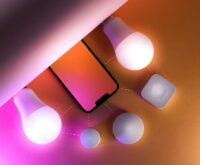That Buzz in Your Pocket Isn’t Your Friend
Let’s be honest. How many times in the last hour have you glanced at your phone? Not because you needed to, but because of a phantom buzz, a brief lull in your thoughts, or just pure, unadulterated habit. It’s sitting there, a sleek black rectangle of infinite possibility and, more often than not, infinite distraction. That constant pull, the endless scroll, the inbox that never seems to stay empty… it’s exhausting. You feel busy, but are you productive? You feel connected, but are you fulfilled? If you’re reading this, chances are the answer is a resounding ‘no’. You’re feeling the digital drain. This is where the concept of Digital Minimalism comes in, not as a radical rejection of technology, but as a thoughtful, intentional re-evaluation of its role in your life. It’s about making your tools work for you, not the other way around.
We’ve been sold a lie. The lie is that more is better. More apps, more connections, more information, more tabs open. But our brains have a finite capacity for attention. Every notification, every email, every mindless scroll is a tiny withdrawal from our focus bank account. Eventually, you find yourself overdrawn, unable to concentrate on the things that truly matter—your work, your hobbies, your family, your own thoughts. Digital Minimalism is the philosophy of using technology with intention, focusing on a small number of carefully chosen and optimized activities that strongly support the things you value, and then happily missing out on everything else. It’s about taking back control.
Key Takeaways
- Minimalism Isn’t Deprivation: It’s about intentionality. You don’t have to become a Luddite; you just need to ensure every tool you use serves a clear and important purpose.
- Focus is a Superpower: In a distracted world, the ability to concentrate deeply is becoming increasingly rare and valuable. Digital clutter is the kryptonite to this superpower.
- It’s a Process, Not a Switch: You can’t just flip a switch to become a digital minimalist. It involves a deliberate process of auditing, detoxing, and reintroducing technology on your own terms.
- The Goal is Autonomy: The ultimate aim is to break free from the compulsive, reactive relationship most of us have with our devices and build a healthier, more autonomous one.
So, What Is Digital Minimalism, Really?
When you hear the term, you might picture someone who has thrown their smartphone into a river and now communicates exclusively via carrier pigeon. That’s a fun image, but it’s not the reality. The term was popularized by author and computer science professor Cal Newport. He defines it as: “A philosophy of technology use in which you focus your online time on a small number of carefully selected and optimized activities that strongly support things you value, and then happily miss out on everything else.”
Let’s break that down because every word matters.
- “Carefully selected and optimized activities”: This isn’t about mindlessly accepting every new app or platform that comes your way. It’s about being a ruthless curator. Does this app genuinely improve your life or career? Does it connect you with people you care about in a meaningful way? Or is it just a time-filler?
- “Strongly support things you value”: This is the most important part. You have to know what you value first. Is it deep relationships? Is it creating art? Is it building a business? Is it physical fitness? Your digital tools should be in service of these values. If a tool doesn’t directly and powerfully support something you hold dear, it has to go.
- “Happily miss out on everything else”: This is the antidote to FOMO (Fear Of Missing Out). Digital minimalists embrace JOMO—the Joy Of Missing Out. They understand that trying to keep up with every trend, every news story, and every social media update is a recipe for anxiety and shallow engagement. They find peace in knowing they are focused on what’s truly important to them.
It’s a fundamental shift from a ‘more is better’ mindset to a ‘less but better’ approach. Think of it like a craftsman’s toolbox. A master craftsman doesn’t own every tool ever made. They own a select few high-quality tools that they know inside and out, and they use them to build beautiful, meaningful things. Your digital life should be your toolbox, not a hoarder’s garage.

The Sneaky Ways Digital Clutter Kills Your Focus
The problem with digital clutter is that it’s invisible. You can’t trip over a messy desktop in the same way you can trip over a pile of books. But its effect on your mind is just as disruptive, if not more so. The constant barrage of information and notifications is fundamentally rewiring our brains, and not for the better.
One of the biggest culprits is something called ‘context switching’. Every time you’re working on a report and a notification pops up, your brain has to switch contexts. It shifts from the deep, focused state required for your work to a shallow, reactive state to process the notification. Then, it has to switch back. This process isn’t seamless. Research shows it can take up to 20-25 minutes to regain your original level of deep focus after just a single interruption. Now, multiply that by the dozens, or even hundreds, of notifications you get a day. It’s no wonder you feel frazzled and unproductive. You’re spending your entire day just trying to get back on track.
Then there’s the dopamine factor. Social media apps, news feeds, and games are designed by very smart people to be as addictive as possible. They leverage a psychological principle called a ‘variable reward schedule’—the same mechanism that makes slot machines so compelling. When you pull to refresh your feed, you don’t know what you’re going to get. It could be something boring, or it could be a juicy piece of gossip, a ‘like’ on your photo, or an interesting article. That unpredictability releases a hit of dopamine, a ‘feel-good’ neurotransmitter, in your brain. You start to crave that hit, leading to the compulsive checking and endless scrolling that eats away at hours of your day. You’re not weak-willed; you’re up against a multi-billion dollar industry designed to capture and monetize your attention.
“The cost of a thing is the amount of what I will call life which is required to be exchanged for it, immediately or in the long run.” – Henry David Thoreau. Every minute you spend on a meaningless notification is a minute of life you’ll never get back.
This constant state of high alert and shallow engagement has serious consequences. It erodes our ability to engage in ‘deep work’—the kind of focused, undistracted work that produces high-value results. It damages our ability to be present with our loved ones. It replaces genuine leisure and solitude with low-quality digital distractions. We lose the ability to be bored, and in losing that, we lose a powerful catalyst for creativity and self-reflection. The clutter isn’t just on your screen; it’s in your head.
Your Step-by-Step Guide to a Digital Declutter
Okay, enough theory. You’re convinced you need a change. But where do you even start? The idea of untangling years of digital habits can feel overwhelming. Don’t worry. We’re going to break it down into a manageable, three-phase process inspired by Cal Newport’s methodology. This isn’t a quick fix; it’s a foundational reset.
Phase 1: The Audit – Confronting the Digital Mess
Before you can clean a room, you have to turn on the lights and see how big the mess really is. This phase is about radical honesty. For one week, your only job is to observe and record. Don’t try to change anything yet.
- Track Your Time: Use your phone’s built-in screen time tracker (like Screen Time on iOS or Digital Wellbeing on Android) or a third-party app to get a baseline. How many hours are you really spending on your phone? What apps are consuming the most time? The numbers might shock you. That’s good.
- List All Your Digital Services: Open a notebook or a document and list every single ‘optional’ digital thing you use. This includes social media apps, news apps, newsletters you’re subscribed to, streaming services, online games, forums, and so on. Be thorough. Go through your phone, your browser bookmarks, and your email subscriptions.
- Ask the Hard Question: Next to each item on your list, write down why you use it. Be specific. Instead of “for fun,” write “to de-stress after work by watching funny videos.” Instead of “to stay connected,” write “to see photos of my cousin’s new baby.” This forces you to articulate the supposed value of each tool.
This audit gives you a clear, objective picture of your current digital life. It’s the ‘before’ photo that will motivate you through the rest of the process.

Phase 2: The 30-Day Detox – A Hard Reset
This is the most challenging, but also the most crucial, phase. For the next 30 days, you are going to take a break from all the ‘optional’ technologies on your list from Phase 1. Yes, all of them. This sounds extreme, but it’s essential for two reasons. First, it breaks the cycle of addiction and allows your brain’s reward pathways to reset. Second, it gives you the space to rediscover what you enjoy and value in the ‘real world’.
What’s ‘optional’? Anything that you can stop using for 30 days without causing significant harm to your professional or personal life. You probably can’t quit email if your job requires it. You might need Google Maps to get around. But you can almost certainly live without Instagram, Twitter, Reddit, and your 24/7 news feed for a month. Be strict with yourself. The goal isn’t to make life impossible, but to strip away the non-essential.
During these 30 days, focus on filling the void with high-quality leisure. Read a book. Go for a long walk without headphones. Learn a new skill. Have a conversation with a friend face-to-face. You will feel bored. You will feel antsy. You will feel the pull to check your phone. This is withdrawal. Push through it. This is where you rediscover the joy of solitude and analog activities.
Phase 3: The Reintroduction – Curating Your Digital Space Intentionally
After 30 days have passed, it’s time to rebuild your digital life from scratch, but this time, you’re the architect. Don’t just automatically reinstall everything. For each app or service from your original list, you must now subject it to a rigorous test before it’s allowed back into your life.
Ask yourself these three questions for each tool:
- Does this tool directly support something I deeply value? (Refer back to your core values).
- Is this the best tool to support that value? (For example, is a chaotic Facebook group the best way to support your hobby, or would a dedicated weekly in-person club be better?)
- How will I constrain my use of this tool to maximize its value and minimize its harm? (e.g., “I will only use Instagram on my desktop browser for 15 minutes on Saturday mornings to check in with a few specific artists I follow.”)
Only the tools that pass this strict vetting process are allowed back in. You will likely find that the vast majority of your old digital habits don’t make the cut. You’ll emerge from this process with a much smaller, more powerful, and infinitely more intentional digital toolbox.
Practical Strategies for Long-Term Digital Minimalism
The 30-day declutter is the reset, but maintaining a minimalist digital life requires ongoing effort and smart strategies. Here are some of the most effective habits you can build to protect your focus for the long haul.
Taming Your Smartphone
Your phone is the primary gateway to distraction. You need to turn it from a slot machine into a simple tool.
- Delete, Delete, Delete: The most effective step is to remove the biggest offenders. Delete all social media apps, news apps, and games. You can still access them through a web browser, which is intentionally clunkier and less addictive. This small amount of friction makes a huge difference.
- Curate Your Home Screen: Your home screen should be for tools, not temptations. Move all your essential, non-distracting apps (like Maps, Camera, Calendar, Notes) to your home screen. Put everything else into a single folder on the second page. This forces a moment of intention before you open a potentially distracting app.
- Go Grayscale: This is a game-changer. Removing the color from your screen makes it significantly less appealing. Those red notification badges lose all their psychological power. It turns your phone back into a boring utility. You can usually find this setting under ‘Accessibility’ options.
Conquering the Inbox Abyss
Email is a tool for other people’s priorities to land on your to-do list. Take control.
- Unsubscribe Ruthlessly: Use a service like Unroll.Me or just spend 30 minutes hitting the ‘unsubscribe’ button on every single promotional email and newsletter you don’t read religiously. Be merciless.
- Set Check-In Times: Don’t leave your email open all day. Designate two or three specific times per day to check and process your email (e.g., 10 AM, 1 PM, 4 PM). Outside of these times, it’s closed. This is called ‘batching’, and it protects your focus.
- Turn Off All Email Notifications: Your email client should not have the power to interrupt you. Turn off banners, sounds, and badge notifications on both your phone and computer. You check your email on your schedule, not its.

Reclaiming Your Computer Desktop
Your digital workspace should be as clean as your physical one. A cluttered desktop leads to a cluttered mind.
- One-Touch File System: Create a simple, logical folder structure for your documents. A good starting point is a few top-level folders like ‘Projects’, ‘Archive’, ‘Personal’, and ‘Work’. The goal is to be able to file any document with a single drag-and-drop.
- Desktop Zero Policy: At the end of each day, clear your desktop. File everything in its proper place. Start each morning with a clean slate. It’s a small ritual that has a big psychological impact on your ability to start work with a clear head.
- Limit Browser Tabs: Are you a tab hoarder? Use a browser extension like OneTab to condense your open tabs into a single list, saving memory and reducing visual clutter. Make it a rule to only have tabs open that are relevant to your immediate task.
Mastering Notifications: Your New Superpower in the Practice of Digital Minimalism
This is perhaps the single most impactful change you can make. Notifications are the lifeblood of the attention economy. Cut off their supply.
- Default to Off: Go into your phone’s settings and turn off notifications for every single app by default. Every. Single. One.
- Allow by Exception: Now, thoughtfully turn notifications back on for a tiny handful of apps where timely alerts are absolutely critical. This usually means phone calls, text messages from actual people (not automated services), and perhaps your calendar. That’s it. No social media, no email, no news, no games. You’ll be amazed at the peace and quiet. Your brain will thank you.

Conclusion
Embarking on the path of Digital Minimalism is not about rejecting the modern world. It’s about consciously and deliberately shaping your engagement with it. It’s a declaration that your time and your attention are your most valuable assets, and you are no longer willing to give them away for free to the highest bidder. The process might feel uncomfortable at first. You’ll have to confront your habits and the anxieties that drive them. But the reward is immense: the return of your focus, the rediscovery of solitude, the deepening of your relationships, and the ability to do the deep, meaningful work you were meant to do. You can trade the shallow, hyper-connected anxiety of modern digital life for a deeper, more intentional, and ultimately more human experience. Your tools should serve you, not the other way around. It’s time to take back the controls.
FAQ
Is digital minimalism just for people who work from home or in tech?
Absolutely not. Digital minimalism is a philosophy for anyone who feels overwhelmed by their devices, regardless of their profession. Whether you’re a student trying to focus on your studies, a parent wanting to be more present with your kids, or an artist seeking creative solitude, the principles of intentional technology use apply. It’s about managing your personal attention, a universal resource we all share.
I use social media for my business. How can I be a digital minimalist?
This is a common and valid concern. The key is to shift from being a ‘user’ to being a ‘professional’. A social media manager for a brand doesn’t mindlessly scroll their personal feed all day. They use specific tools (like scheduling software) during designated work blocks to achieve specific business outcomes. The minimalist approach would be to delete the apps from your phone, conduct all business-related social media activity on a desktop browser during scheduled work hours, and strictly avoid engaging with it outside of that professional context.
What if I try the 30-day detox and feel even more anxious and isolated?
This is a real possibility and a sign of how deeply ingrained these tools have become in our lives. It’s important to be prepared. Before you start, make a list of high-quality analog activities you want to do and people you want to connect with. Schedule a coffee date, pick up a book you’ve been meaning to read, or plan a hike. If you actively fill the void with fulfilling activities, the feeling of isolation will be temporary. The initial anxiety is a withdrawal symptom; pushing through it is how you break the dependency and discover that true connection doesn’t require a screen.



 Group Project Survival Guide: Ace Your Next Collaboration
Group Project Survival Guide: Ace Your Next Collaboration  Conquer Essay Writer’s Block: Proven Strategies & Tips
Conquer Essay Writer’s Block: Proven Strategies & Tips  Supercharge Your Studies: The Ultimate Student Productivity App Guide
Supercharge Your Studies: The Ultimate Student Productivity App Guide  Find Your Dream Career: The Ultimate Student Guide
Find Your Dream Career: The Ultimate Student Guide  Network Like a Pro: Build Connections From Day One
Network Like a Pro: Build Connections From Day One  Nail That Interview: The Undeniable Power of a Killer Cover Letter
Nail That Interview: The Undeniable Power of a Killer Cover Letter  Crypto Swing vs Day Trading: Which Style Wins?
Crypto Swing vs Day Trading: Which Style Wins?  A Guide to NFT Generative Art Platforms (2024)
A Guide to NFT Generative Art Platforms (2024)  Crypto’s Carbon Footprint: The Real, Nuanced Story
Crypto’s Carbon Footprint: The Real, Nuanced Story  Join a Web3 Community: The Ultimate Networking Guide
Join a Web3 Community: The Ultimate Networking Guide  What Are AMMs? Automated Market Makers Explained Simply
What Are AMMs? Automated Market Makers Explained Simply  NFT Legal Questions Answered: A Simple Guide
NFT Legal Questions Answered: A Simple Guide